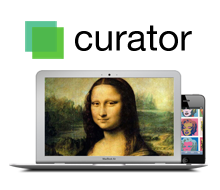The biggest mistake museums make on the web

Not long ago I conducted a webinar on the things museums should do to make sure they have a great site worthy of a great venue. Afterwards, one of the participants asked me a question I wished I'd had the chance to address during the session, because it gets right to the heart of the problems we see many museums making online.
I'll do the next best thing and answer it here. The question:
What is the biggest mistake you see museums make regarding their websites?
The biggest mistake I see museums make is in underestimating the importance of their website within the overall marketing landscape. That, in turn, leads to all kinds of other problems which create short-comings on the museum's site: decisions about who their interactive partner should be (most pick the local design firm, which usually knows little about museums' strategic/content/design needs), selection of a poor content management system and design & branding that gets compromised.
I'm also surprised at how little attention some people pay to traffic analytics and to understanding the meaning of their traffic patterns. For historic destinations in particular, search engine optimization and a content-based strategy are very important. People will find a city's foremost art museum if they type "art museum [city goes here]" into Google, but other facilities that are either outside a large metro or that rely on their content need to pay attention to their analytics and understand their online audiences and build engagement with them.
In 2012, with audiences fragmenting, a website should be the key to engaging audiences and "telling the story" in a compelling way, featuring the right content that then brings them through the door... and turns them into advocates.
Museums typically budget six or seven figures for exhibitions, but many scimp when when it comes to allocating funds for their websites. This is pennywise and pound foolish. It reflects a mindset regarding technology that has to change if museums want to remain a vital part of the cultural conversation in their communities.

